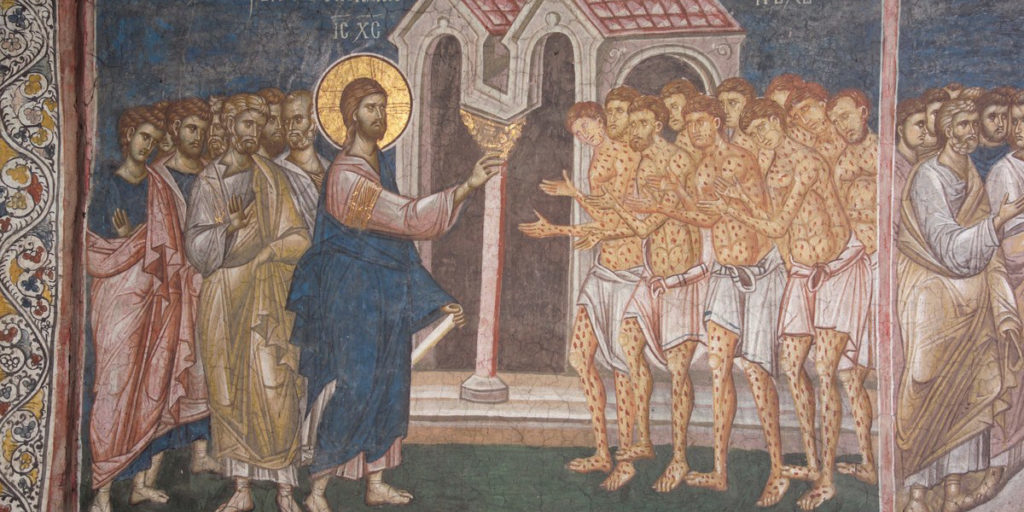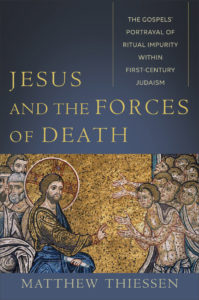
Jesus and the Forces of Death
Since the Holocaust, many Christians have been made aware of the always-present danger of anti-Judaism in Christian thinking. In at least some Christian circles, accusations of anti-Judaism hold considerable power and can function as an effective way to dismiss the claims or arguments of another person. And ever since the pioneering work of Geza Vermes in his 1973 book titled Jesus the Jew, it has been common for people to emphasize that Jesus was, in fact, a Jew. These developments should be very welcome to all, yet the same people who speak most about Jesus’s Jewishness often go on to argue that Jesus was not very Jewish in certain ways. My belief is that such people, whether preachers, writers, or scholars, are guilty of the same error committed by the editors of the Revised Common Lectionary in their carefully curated version of Genesis 17.
A Jesus Who Really Was that Jewish
For instance, N. T. Wright, a prolific Christian scholar who wields immense influence inside and outside of academic circles, speaks of “a very Jewish Jesus who was nevertheless opposed to some high-profile features of first-century Judaism.” Such arguments, as James Crossley notes, boil down to the claim that Jesus was “Jewish . . . but not that Jewish.” One of my central aims in writing this book is to show that the Gospel writers portray a Jesus who really was that Jewish. I will do this by focusing on one area where scholars almost always conclude that Jesus really wasn’t that Jewish after all: his interactions with those who were ritually impure. Matthew, Mark, and Luke repeatedly depict Jesus as the one who rescues people from the forces of impurity that exist within the world. In all three of these Gospels, Jesus encounters people who are ritually impure due to untreatable conditions: “leprosy” (lepra), an abnormal genital discharge, and death. My conviction is that we cannot fully appreciate how the Gospel writers communicate Jesus’s significance apart from an accurate understanding of the ways in which first-century Jews constructed their world. Click To Tweet
Having just referred to ritual impurity, I know that I am in danger of turning many readers off, but bear with me a bit longer! My conviction is that we cannot fully appreciate how the Gospel writers communicate Jesus’s significance apart from an accurate understanding of the ways in which first-century Jews constructed their world. I am persuaded that we often misunderstand the Gospel writers’ depictions of Jesus because we naturally and unthinkingly transfer him and the people of the literary world of the Gospels into our own conceptual world. When coming across something foreign or different, it is natural to translate (often unconsciously) whatever is foreign into something understandable. But modern readers of the Gospels will not rightly understand Jesus apart from a more thorough comprehension of ancient Jewish (and non-Jewish) ritual purity concerns, precisely because these purity concerns map out the reality of the world as the Gospel writers conceived it.
Understanding Purity on its Own Terms
Many modern readers of the New Testament find the Jewish ritual purity system to be alien at best and irrational at worst. Surely, such thinking goes, it is an embarrassment to modern religious adherents that their sacred texts refer to natural bodily processes as impure. How can any enlightened person consider someone who experiences natural bodily processes, such as sex, childbirth, or menstruation, to be impure? For Christian readers, the embarrassment or discomfort created by these passages is often ameliorated only by the supposed fact that Jesus and Paul rejected ritual purity concerns because such laws were focused on trivial, external issues, when God cares about interior dispositions and attitudes. Consider the words of the early twentieth-century German theologian Adolf von Harnack: “[Jews] thought of God as of a despot guarding the ceremonial observances in His household; [Jesus] breathed in the presence of God. [The Jews] saw Him only in His law, which they had converted into a labyrinth of dark defiles, blind alleys and secret passages; [Jesus] saw and felt Him everywhere.” Harnack’s words describe Judaism as dead legalism focused on external ceremonies and then contrast this negative portrayal of Jewish religiosity to Jesus’s free spirituality. One can see in Harnack’s claims the belief that Judaism is a religion, while Christianity is a relationship with God.
The claim that Jesus opposes the ritual purity system is all too common within theology, biblical interpretation, sermons, and the everyday thinking and language of many Christians. It is a claim that transcends internal Christian divisions between liberals and conservatives, between Catholics, Orthodox, and Protestants. For instance, John Dominic Crossan argues that Jesus saw himself as the “functional opponent, alternative, and substitute” to the Jewish temple in Jerusalem. For Crossan, this opposition to the ritual purity system and the Jerusalem temple was connected to economic, class, and gender inequities. In other words, at least one central aspect of Jewish life—ritual purity and the temple cult—perpetuated an unjust social system that Jesus sought to overcome. In this light, Jesus stands for equality while Judaism stands for inequality.
 Likewise, Marcus Borg has argued that Jesus envisaged “a community shaped not by the ethos and politics of purity, but by the ethos and politics of compassion.” And Richard Beck makes a similar contrast: “Sacrifice—the purity impulse—marks off a zone of holiness, admitting the ‘clean’ and expelling the ‘unclean.’ Mercy, by contrast, crosses those purity boundaries. Mercy blurs the distinction, bringing clean and unclean into contact. Thus the tension. One impulse—holiness and purity—erects boundaries, while the other impulse—mercy and hospitality—crosses and ignores those boundaries.”
Likewise, Marcus Borg has argued that Jesus envisaged “a community shaped not by the ethos and politics of purity, but by the ethos and politics of compassion.” And Richard Beck makes a similar contrast: “Sacrifice—the purity impulse—marks off a zone of holiness, admitting the ‘clean’ and expelling the ‘unclean.’ Mercy, by contrast, crosses those purity boundaries. Mercy blurs the distinction, bringing clean and unclean into contact. Thus the tension. One impulse—holiness and purity—erects boundaries, while the other impulse—mercy and hospitality—crosses and ignores those boundaries.”
Such arguments are indebted to a larger theological agenda that equates Jesus and Christianity with compassionate love on the one hand, and Judaism with sterile, heartless law observance on the other. As such, they are religious apologetics masquerading as historical research. “This is not history,” Paula Fredriksen argues, “nor is it realistic description. It is caricature generated by abstractions, whereby a set of politically and ethically pleasant attributes define both Jesus (egalitarian, caring, other-directed, and so on) and, negatively, the majority of his Jewish contemporaries.”
What I advocate in this book is that readers, whatever their modern religious, theological, or ideological convictions, work sympathetically to understand ancient Jewish thinking about ritual purity on its own terms. Whatever we might think about systems of ritual purity, such systems were integral to the thinking of all ancient people, Jesus and the Gospel writers included. In this book, then, I focus on how an early reader who was knowledgeable of the Jewish purity laws (and ancient Mediterranean purity laws more generally) might have interpreted the Synoptic Gospels’ portrayals of Jesus.
Content taken from Jesus and the Forces of Death by Matthew Thiessen, ©2020. Used by permission of Baker Publishing www.bakerpublishinggroup.com. Subheadings added by Credo editorial staff.

